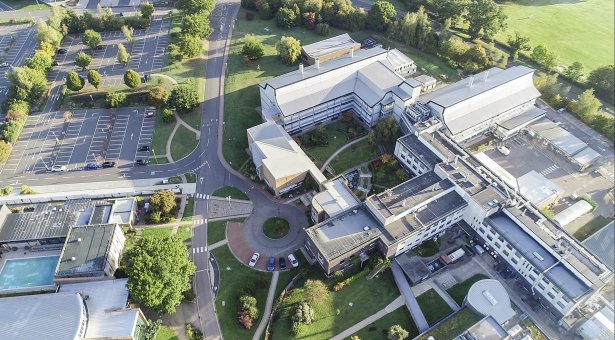Introducing our brand new website

Last month, saw the launch of our brand new and completely rebuilt website.
The new design, which we worked on in collaboration with digital marketing agency Selesti, was the culmination of 12-months consulting, planning, testing, design and copywriting work.
As an independently funded scientific research institute, our website has several competing (and sometimes contradictory) requirements.
First, we are world-leaders in plant and microbial science.
That means we are at the cutting edge of scientific knowledge, technology and methodology and as such, need to communicate new discoveries and opportunities to our fellow scientists. The language required to do this is, by necessity, full of scientific terms and Latin species names, that are inaccessible to all but a small number of relevant partners and collaborators.
This technical language is at odds with our website’s next aim.
We are primarily funded by UK taxpayers. Because of this we have a duty to communicate what we are doing with that money, who is doing it and why we’re doing it. My own scientific education ended at GCSE level, so I know only too well how big the language gap can be between these two audiences.
Along with scientists and interested members of the public, our website also needs to communicate with industry and potential collaborators.
While some of our work is fundamental in nature, we also work on areas of applied science that can have direct benefits for a range of businesses from plant breeders, farmers, and retailers, through to agri- and bio-tech companies.
It is in all our interests to highlight what these opportunities are, and to shout about the successes that a wide range of partnerships are already delivering.
Then there is the next generation of scientists.
PhD Students and Postgraduate Scientists are a key part of our institute. As well as representing the future of scientific progress, the work they contribute is vital to our ongoing position at the forefront of plant and microbial science.
Furthermore, our enthusiastic, engaged and diverse community, coupled with an organisation-wide push for equality and collaboration, creates the John Innes Centre culture we are so proud of.
Our website needs to help to inspire that next generation, to see careers for themselves in plant and microbial science, both here at John Innes Centre, on the wider Norwich Research Park or at one of our fellow institutes around the UK and the world.
Meeting the needs of these vastly different audiences is difficult, but far from impossible. We have looked to achieve it by implementing a website structure that allows anyone, regardless of their prior levels of knowledge to find out what it is we do and why our work is so important.
From every “scientific” page, we have installed a navigation that allows users to access related information.
This might be to see which of our scientists are working on that aspect of our science, which we have listed as “Associated scientist”.
Importantly we made the decision here to include all the staff involved, from Project Leaders and Postdoctoral Scientists, through to the PhD students and Research and Support Staff, without whom we could not achieve what we achieve.
Alternatively, you might want to read the detailed scientific papers that have been published as part of this work, so we have included the key papers on the right-hand side. Alongside the key papers, we will link to relevant other pieces of work and news stories, as well as linking to our collaborators and funders for each piece of work.
In this way, we hope the new site ties together what we do, who does it, who funds it and why we do it – all while showcasing the incredible people who make up the John Innes Centre.
To get to this point has relied on a lot of people. First, our developers and designers at Selesti, who have produced page templates that are flexible and consistent, all within a clean and crisp design and patiently answered 107 different questions, some of them twice.
Then there are our staff across the institute who have, since last Christmas, answered our call for their thoughts feedback and ultimately content, so we could actually populate those templates.
Now the site is live, work on it can really begin.
Over the next few months, we hope to tie those key questions together in an ever-more seamless and comprehensive way, so that with every new breakthrough, you can see the full picture.
To that end, we also want your feedback. Found something that doesn’t link together properly, or something that doesn’t make sense, even just a broken link or an image that doesn’t look right? Let us know.

